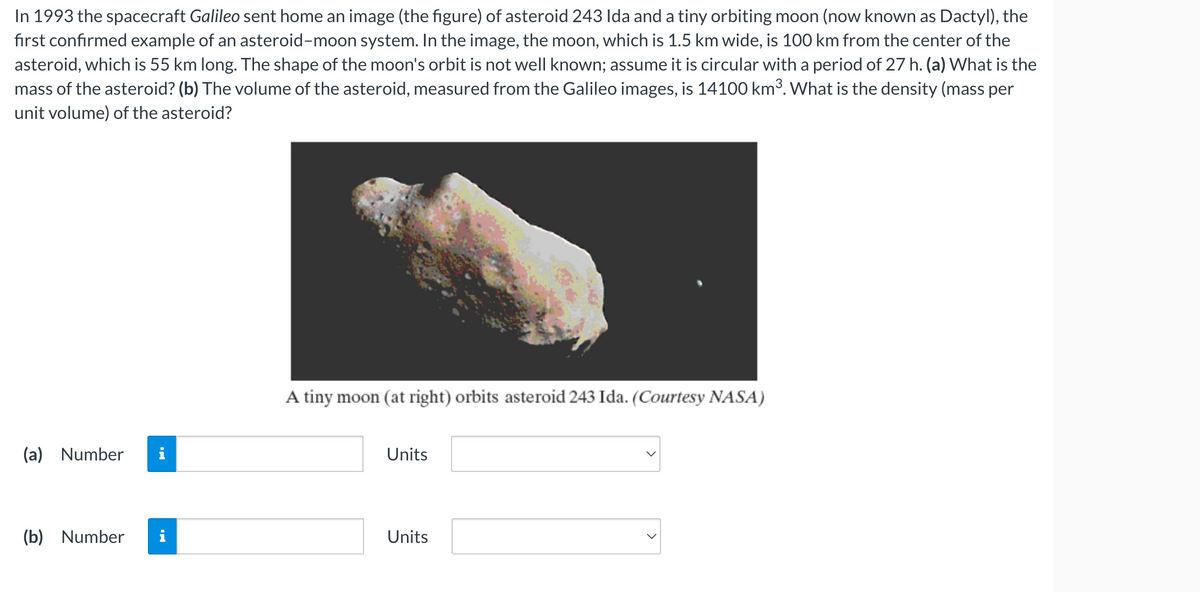In 1993 the spacecraft Galileo sent home an image (the figure) of asteroid 243 Ida and a tiny orbiting moon (now known as Dactyl), the first confirmed example of an asteroid-moon system. In the image, the moon, which is 1.5 km wide, is 100 km from the center of the asteroid, which is 55 km long. The shape of the moon's orbit is not well known; assume it is circular with a period of 27 h. (a) What is the mass of the asteroid? (b) The volume of the asteroid, measured from the Galileo images, is 14100 km³. What is the density (mass per unit volume) of the asteroid? (a) Number i (b) Number i A tiny moon (at right) orbits asteroid 243 Ida. (Courtesy NASA) Units Units
Gravitational force
In nature, every object is attracted by every other object. This phenomenon is called gravity. The force associated with gravity is called gravitational force. The gravitational force is the weakest force that exists in nature. The gravitational force is always attractive.
Acceleration Due to Gravity
In fundamental physics, gravity or gravitational force is the universal attractive force acting between all the matters that exist or exhibit. It is the weakest known force. Therefore no internal changes in an object occurs due to this force. On the other hand, it has control over the trajectories of bodies in the solar system and in the universe due to its vast scope and universal action. The free fall of objects on Earth and the motions of celestial bodies, according to Newton, are both determined by the same force. It was Newton who put forward that the moon is held by a strong attractive force exerted by the Earth which makes it revolve in a straight line. He was sure that this force is similar to the downward force which Earth exerts on all the objects on it.

Trending now
This is a popular solution!
Step by step
Solved in 2 steps with 2 images









